Stephanie's story:
Claiming her space while starting a new leadership role six months pregnant
Imagine starting a new high-profile job with all eyes on you and your growing belly. In October 2018 at six months pregnant, Stephanie joined Verizon as their Head of Social and Emerging Media.
The decision to take on her greatest professional challenge to date at the exact same time that she became a mother was a no-brainer. “I wanted to find a new role that had more growth opportunity, a broader remit and lead a bigger team. I could have stayed in my previous role where I would have had a generous maternity leave and flexible return to office policy. But I knew that as soon as I got back from mat leave I would be anxious for my next step. Short-term challenge for long-term pay-off."
As a new hire, Stephanie didn’t want to spend her time chit-chatting about birth and registries; she focused on building her credibility, networking, and growing her team. In other words, her pregnancy was not a conversation starter.
Noteworthy projects like her first Macy’s Thanksgiving Day Parade and Super Bowl brand activations provided plenty of to-dos for her new role. And at the same time, she had to tackle the beast that is coverage planning.
Unlike many individual contributors, managers can’t always allocate their responsibilities to peers, so Verizon put a leader from their social agency (aka external resource) in her role during her four-month parental leave. And the planning time crunch was real. Looking back, Stephanie says two months wasn’t enough time to execute work and set up her team for success during her leave. But she made it work, and it paid off.
The bees kept buzzing when Stephanie gave birth to her son and completely disconnected from work--a non-negotiable boundary. While she was gone, her team continued to deliver and even hired and onboarded two new direct reports. Successful team growth and results from her coverage person proved Stephanie’s leadership to be effective even in the short time before her absence.
Stephanie’s story continues with highlights and learnings and is ultimately a testament to how short-term challenges can yield significant improvements in productivity and results.
Read on to hear more about how Stephanie started a new leadership role while pregnant, set her team up for success when she went on leave, and returned to work as a parent. Dive deeper below.


#1 Starting a new job while pregnant
Stephanie had no reservations about interviewing while pregnant, but acknowledged the unique challenges associated with starting a new role at a new company while also preparing to go on leave. She made several important decisions in those early days as a new leader at Verizon that she says set her up for long term success.
Stephanie’s key decisions and takeaways from starting a new leadership role while pregnant:
- She decided not to talk about her pregnancy at all during the interview process, but immediately told her manager about the pregnancy after she got the job offer: She interviewed while four months pregnant and did not feel her pregnancy was something she had to disclose. When she did disclose after getting an offer, she was met with total support.
- She actively avoided discussing her pregnancy at work: Since she was a new employee in a big role, she didn’t want people to focus on her pregnancy - she wanted them to focus on her as a leader as she established herself at the company. While some may consider this not “bringing her whole self to work,” she felt very good about this personal decision. “In a professional setting, I didn’t want my pregnancy to be a conversation starter, even though I was showing. I probably overcompensated because of my own insecurities about starting a big job six months pregnant, but that is the line that I drew. I wanted to be the new woman with the idea, not the new woman with the bump. In hindsight, I don’t think that was a bad decision, it’s just a personal choice.”
- She decided to take a portion of her parental leave as unpaid leave in order to have a full four months: Most companies have policies that paid parental leave doesn’t start until after one year of employment. Even with Verizon’s policy starting after 6-months of service, Stephanie took a few weeks of unpaid leave, with the remaining paid. This was an investment she was willing to make for the long-term payoff of switching to a more exciting role.
- It was very difficult to both “on-ramp” and “off-ramp” at the same time: The first two months were crazy as she focused on major activations like the Macy’s Thanksgiving Day Parade and the Super Bowl, all the while thinking about how she would soon be out on parental leave. Because she was so busy onboarding, she didn’t have much headspace to think about planning for her leave at the same time.
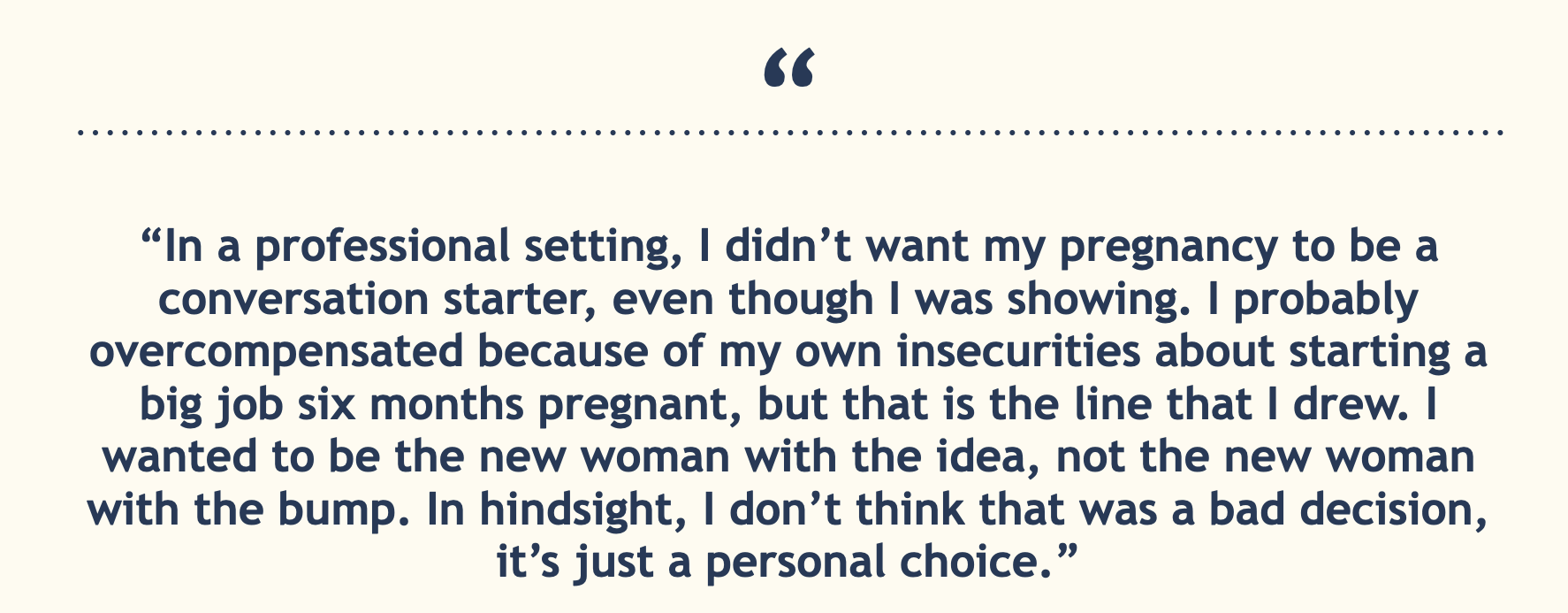
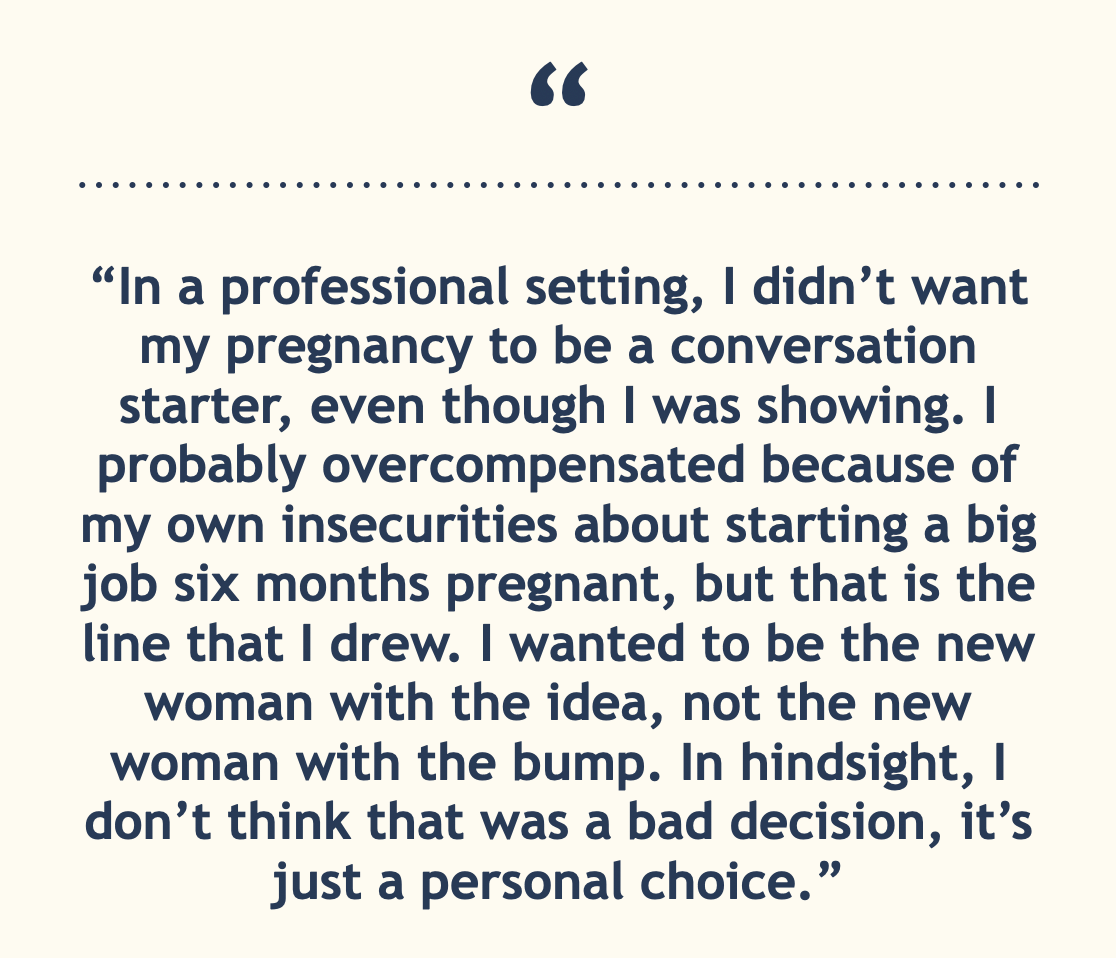
#2 Structuring her coverage plan - and setting her direct reports up for success
Coverage planning when you are a manager introduces some different and nuanced challenges. Your work is likely more strategic in nature, which is challenging to hand off to others. Your team needs to be supported in your absence.
Stephanie’s advice on how to think about coverage planning if you are in a management role:
- Start the planning process early: She began planning about week 32, and that was too late considering she had to bring in a person to take over her entire role. This didn’t leave enough time to find and train someone.
- Weigh the pros and cons of hiring an outside contractor to cover for your role: Stephanie knew she had to hire someone to take over her role because she couldn’t split up her work among her team. She debated hiring a temporary contractor or an internal resource, but ultimately hired someone from an agency who had direct familiarity with her team, projects, and priorities. This probably cost 2X more than if she had had more time to identify and train an internal resource, but she didn’t have any other options given the time constraints and it was a major benefit that this person had such strong familiarity with her work.
- It’s completely fine to ask your coverage person to just “keep a lid on things” vs. pushing strategic projects forward: Stephanie opted to pause new strategic projects while she was out so that she could lead these once she returned. Instead, she had her coverage person maintain the status quo and support her direct reports.
- Do long-term planning for each direct report as part of the coverage planning process: Not only is this generally good to do, this also helps direct reports feel less negatively impacted by the absence of their manager. It gives them clear direction, and an exciting vision for a future state.
- Strongly consider the role you will play in hiring people on your team while you are out: Stephanie decided to let her manager hire one direct report while she was on leave - and she had no involvement in the hiring process. Another direct (with whom Stephanie interviewed and hired) started their first day while she was out on mat leave. This was a bit of an awkward experience for the new hires - but there was no way around this. When the recruiting team found amazing talent and Stephanie’s manager personally interviewed the candidate and validated their strengths the Social recruiting team had to move forward. She’s glad they didn’t wait until she was back because the talent was top notch.
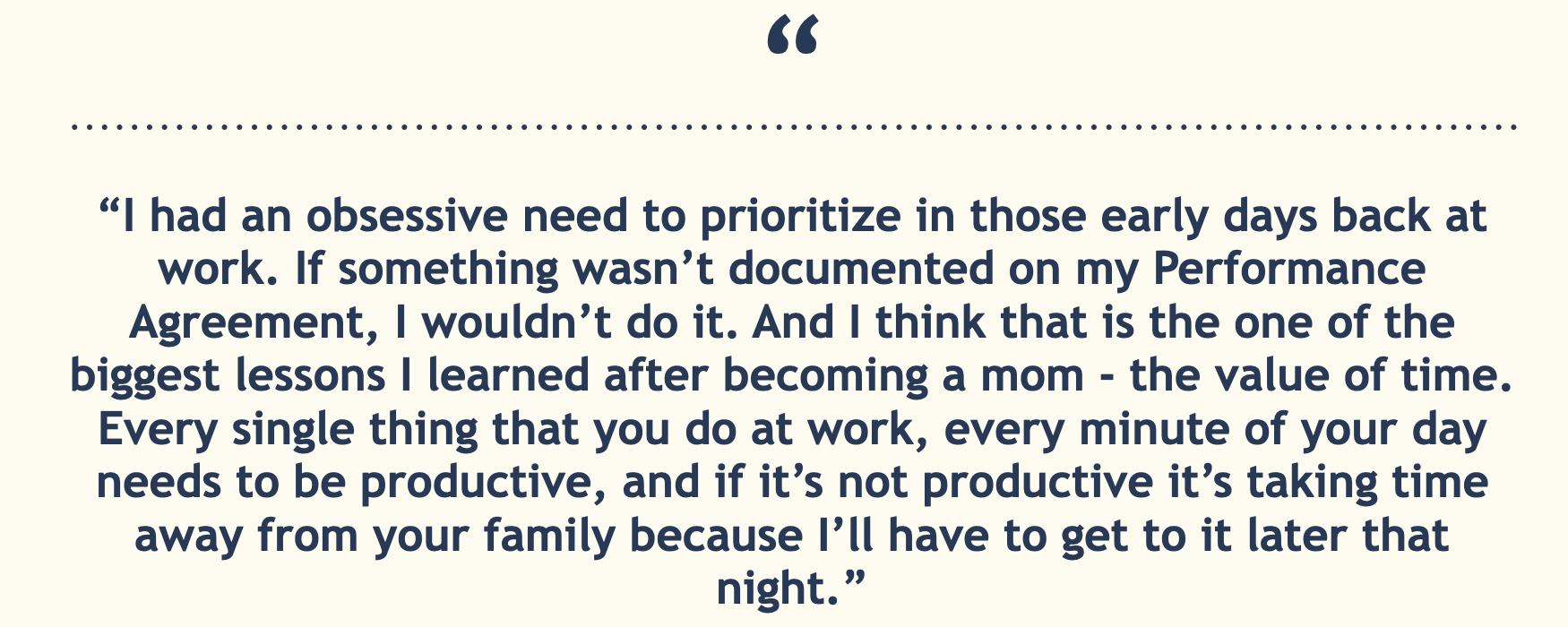
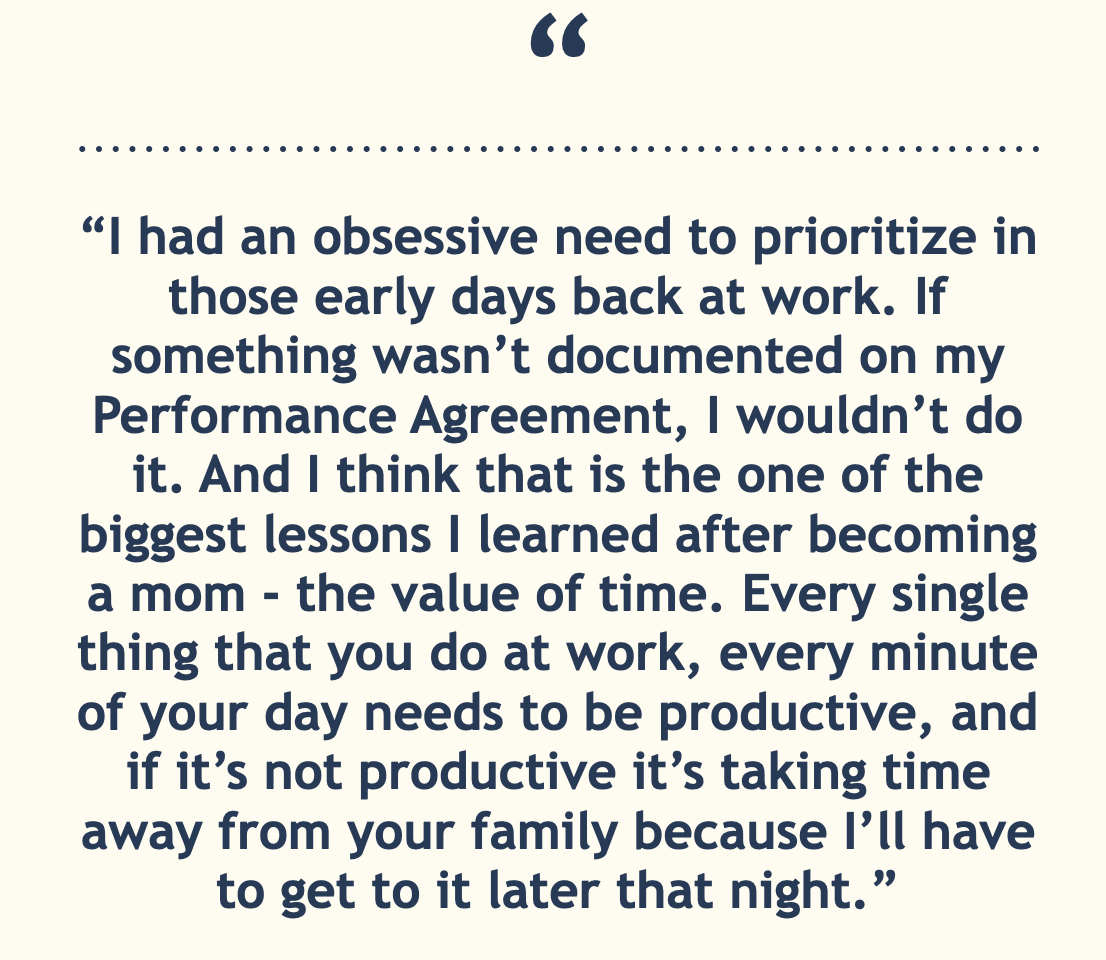
#3 Returning to work
Despite the high pressure of her new role, she was able to almost entirely disconnect while on leave. This gave her much-needed space and time to transition into motherhood before turning her attention back to work. After four months of parental leave, she returned and dove right back into her fast-paced job - but with some key (and critical) changes.
Stephanie’s experience with returning to work:
- She completely disengaged while out on leave, until a few weeks before she returned: At that point she did a few 1:1s with direct reports and 3-4 calls with her manager to get up to speed on the current state of the work and to slowly wrap her mind around returning.
- The hardest part about work after she returned was setting new boundaries and creating a new routine: “I had an obsessive need to prioritize in those early days back at work. If something wasn’t documented on my Performance Agreement, I wouldn’t do it. And I think that is the one of the biggest lessons I learned after becoming a mom - the value of time. Every single thing that you do at work, every minute of your day needs to be productive, and if it’s not productive it’s taking time away from your family because I’ll have to get to it later that night.”
- Doing performance reviews in her first month back was difficult: While she was not the one being reviewed, the performance review cycle started right when she got back to work which meant she had to submit reviews of her direct reports. She leaned heavily on her manager to help her complete these reviews, as they were very important to her direct reports but she had been out for the previous four months so was missing key context and feedback.
- Took her about three months back at work to feel good and fully ramped: At that point, she had a strong routine in her personal life and had some early wins under her belt at work.
- Returning to work was not conducive to breastfeeding: Scheduling in pumping times was nearly impossible. The pace of work was too fast to be able to disconnect to pump every few hours. Traveling was even more difficult - like having to figure out how to pump on trains. “There are real challenges and sacrifices that mothers make in the workplace where sometimes you have to choose between pumping and joining a meeting. Because I was still fairly new having only been in the role three months before going on mat leave, when I came back, I still felt the need to prove myself, be present, be accessible, be vocal, be the leader. In some situations, I chose my career over being able to pump at optimal times which ultimately led to me breastfeeding for shorter than I would have liked.”
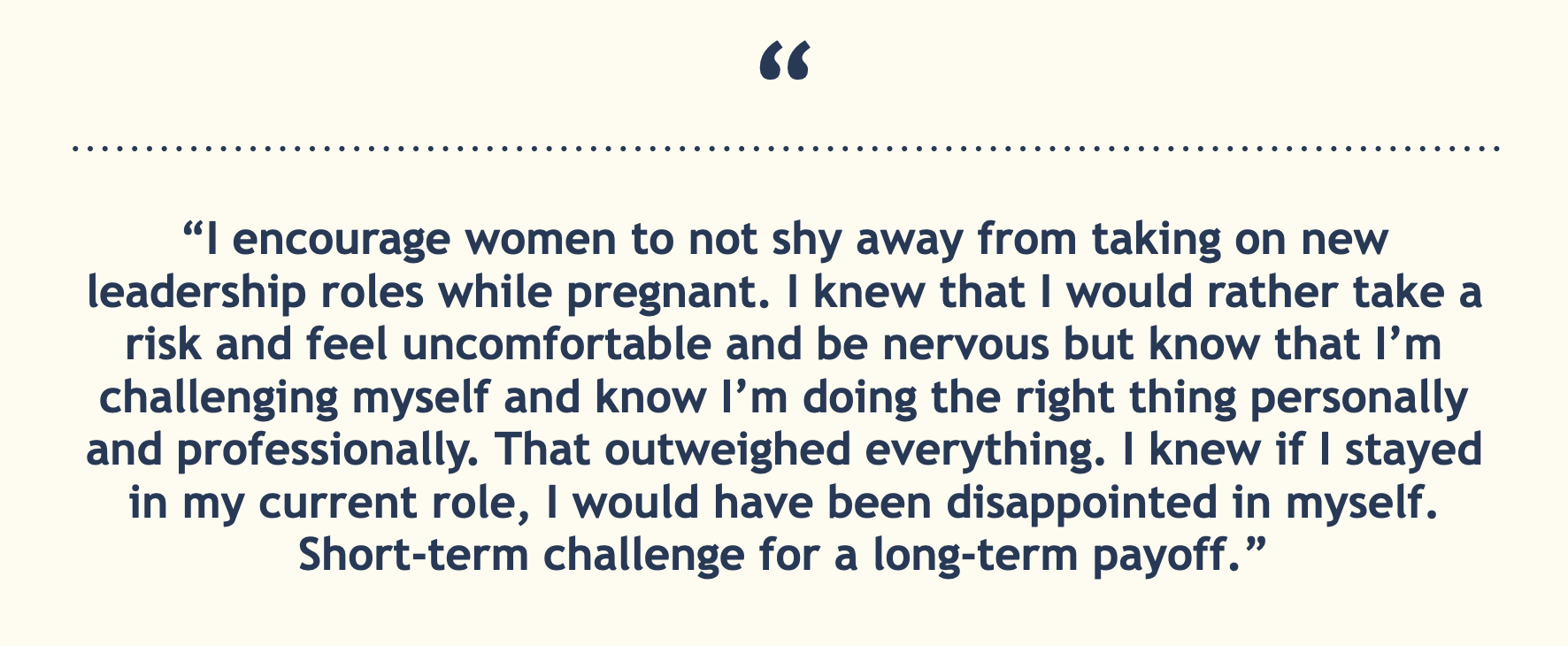
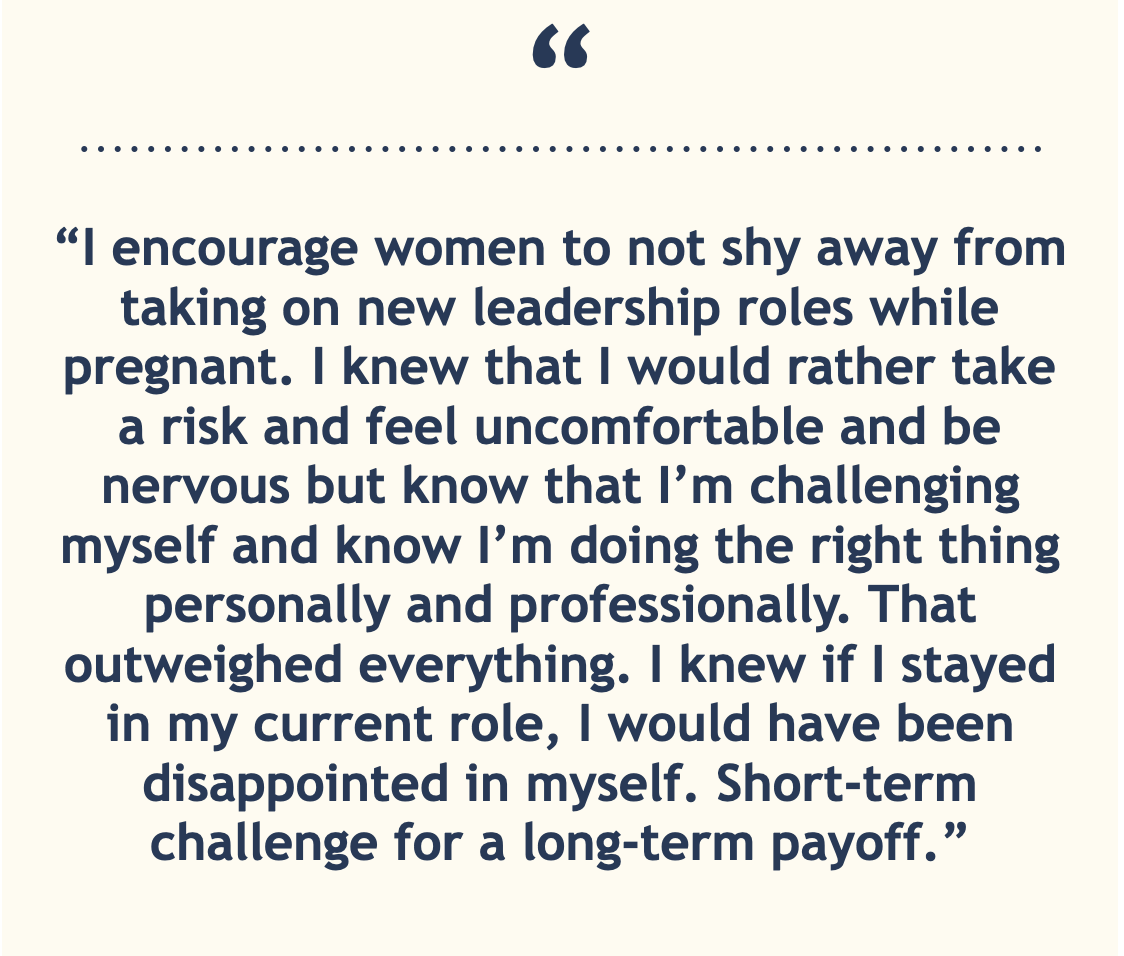
#4 Structuring her home support to make her more successful at work
Not only did Stephanie focus on professional changes (ie productivity) upon returning to work - she was also thoughtful about how she set up her home life.
Here are things Stephanie did at home to set her up for success:
- Found a nanny who lived close to her: Stephanie specifically looked for a full-time nanny who lived close to her home in Brooklyn so that commuting for the nanny wouldn’t be an issue. She needed someone 8am - 6pm who was flexible in case she or her husband were a few minutes late.
- Took turns getting home by 6pm: More often than not, Stephanie was home at 6:00pm to relieve the nanny, but if she had something she had to stay late for it was always easy to have her husband be home by then.
- Occasionally could ask the nanny to stay an hour or so later: This speaks to the flexibility of having a nanny vs. daycare - but she rarely had to do this.
- Spent money to "buy time": Often, Stephanie would Uber to work which cost $25 for a 15-minute commute vs. a 45-50 minute train ride.
- Ordered food for almost every meal: It is so easy to get takeout in Brooklyn, and this saved her hours of every week since she avoided meal prep, grocery shopping and cooking.
Want to read more of these stories?
We'll send them straight to your inbox every time we publish a new profile (two times per month).
Send them to me!

